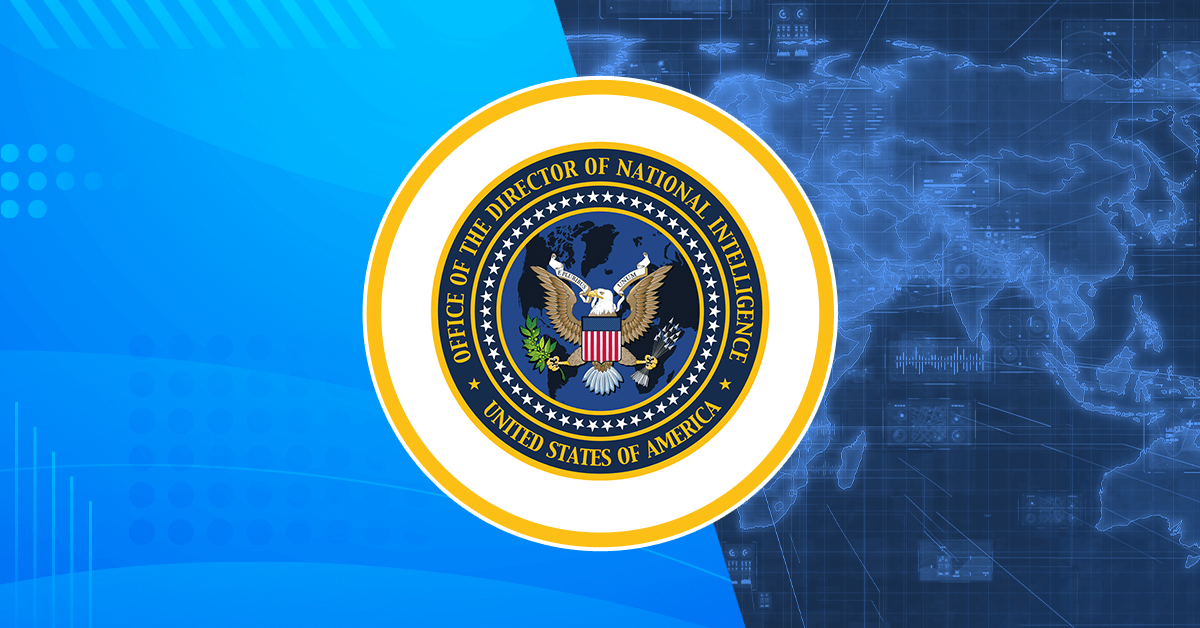Every year, the U.S. Intelligence Community publishes a collection of the most alarming threats to the country’s national security. The information included provides a structure and framing for the fight against that which is seen to contest American freedoms and the rights of citizens.
“The world that emerges from this tumultuous period will be shaped by whoever offers the most persuasive arguments for how the world should be governed, how societies should be organized, and which systems are most effective at advancing economic growth and providing benefits for more people,” the Office of the Director of National Intelligence said.
This year’s Annual Threat Assessment of the U.S. Intelligence Community went public in March and was an attempt at transparency about the biggest causes for concern in the global sphere — be they nations, technological trends or health issues.
Read on to learn about some of the most critical dangers the IC outlined.
To hear highly important IC officials like the CIA’s chief technology officer, the Defense Intelligence Agency’s CTO and the chief information officer of ODNI discuss how their specific agencies are dealing with these threats and how you in industry can help, register to attend the Potomac Officers Club’s 2024 Intel Summit. This event is geared toward government contractors who want to be in business with the IC. If that’s you, don’t miss out!
4. Health and Environment
Climate change and extreme weather have created an increasingly volatile environment. These natural occurrences, ODNI states, have a direct impact on the global economy and statehood. Immigration from lower-income countries besieged by natural disasters will multiply when natural disasters occur; shifting weather patterns may mean that food production has to ramp up in vulnerable places like Africa, South Asia and Latin America; and droughts in China, Central America and the U.S. are having an impact on shipping capacity and energy creation.
On the health side of things, intelligence agencies are concerned about another pandemic.
“Drivers for infectious disease emergence are on the rise, including deforestation, wildlife, harvesting and trade, mass food production, and lack of international consensus on biosafety norms,” the agency wrote.
Highly contagious and transferable viruses and diseases like avian influenza, cholera, dengue, Ebola, monkeypox, and polio are a burden on an understaffed global health infrastructure.
3. Weapons of Mass Destruction
Under each of the problematic nations that the report highlights — China, North Korea, Iran and Russia — there is a section for weapons of mass destruction, or WMDs. The nuclear threat is a devastating prospect too overwhelming to ignore. Nuclear weapon stockpiles are on the rise, according to ODNI—Russia has the largest stockpile and North Korea is in talks to continue testing and considers nuclear aggression to be the central piece of its attack strategy.
2. Disruptive Technologies
Artificial intelligence and biotechnologies are clearly having a big moment, and ODNI is considering how they could affect privacy and human rights. Detection technologies, stealth systems and electronic warfare are also highly prevalent and essentially remaking the modern battlespace.
“China is pursuing AI for smart cities, mass surveillance, healthcare, drug discovery, and
intelligent weapons platforms. Chinese AI firms are already world leaders in voice and image recognition, video analytics, and mass surveillance technologies,” ODNI said.
1. Cyber
Just like with WMDs, there is a subsection underneath every state that discusses each adversary’s cyber capabilities and potential for cyber crime. The IC believes many of the nations, particularly Russia and Iran, might try to sway the outcome of this year’s presidential election. North Korea is conducting cryptocurrency heists and China, arguably the foremost pressing national threat, is seen a highly capable cyber actor through espionage and surveillance efforts.
Don’t take it from us; learn from the experts. Join the 2024 Intel Summit, held on Sept. 19 at the Hilton McLean in Virginia, to hear information from decision-makers in the IC that might not be available anywhere else. Browse the full line-up of fantastic speakers.
















